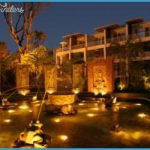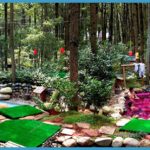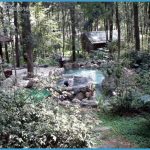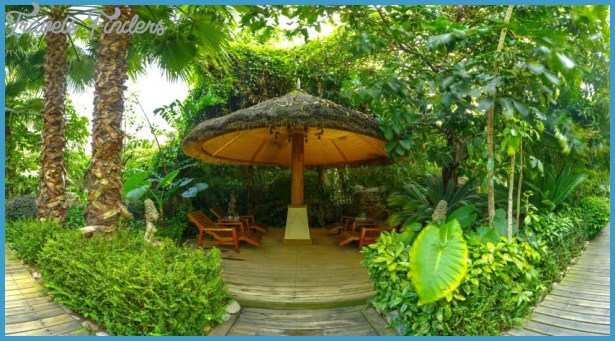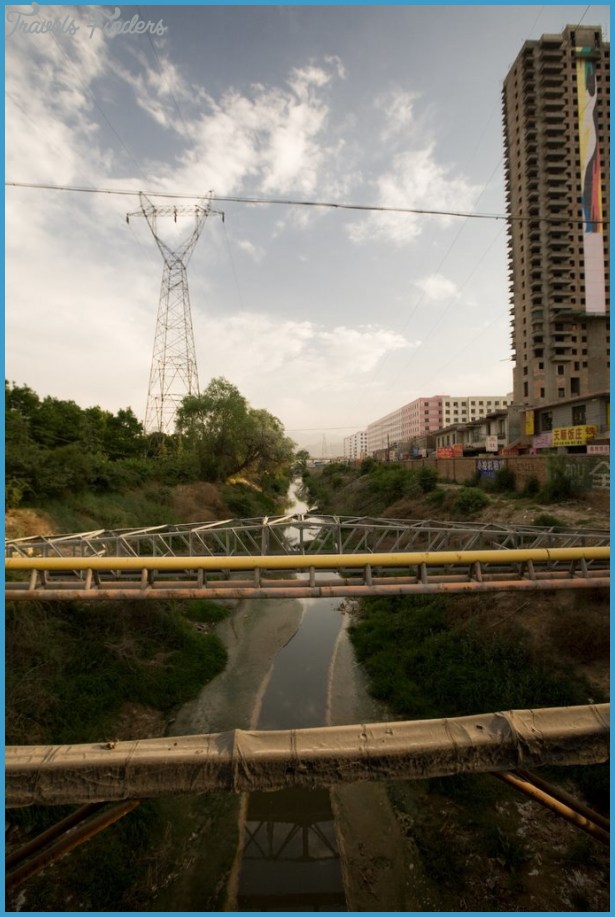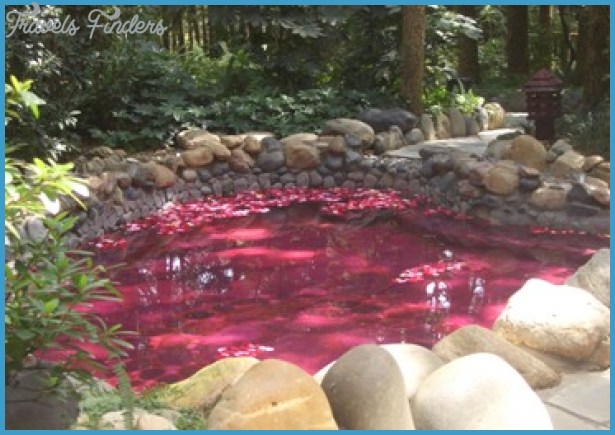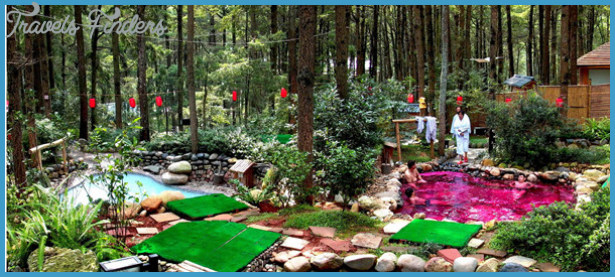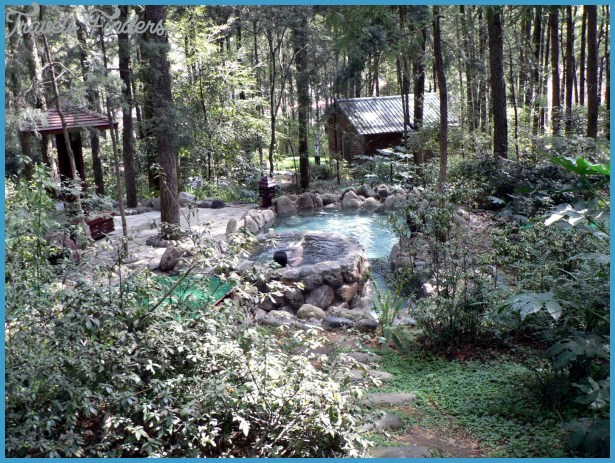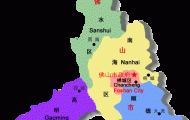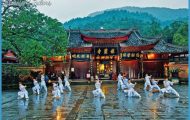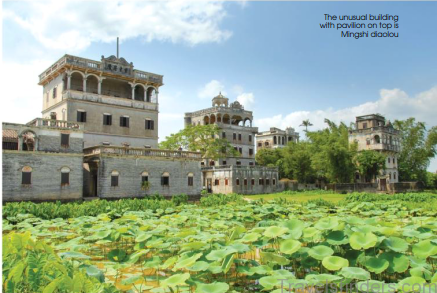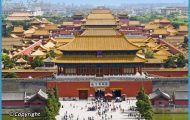The building has a square ground-plan with 6.2m/20ft sides and is 6.7m/22ft high. It is made completely of bronze, as are its fittings and statues. It gets its name from the way its roofs shine like gold in the sun.
On a foothill of Yu’anshan Mountain, 10km/6 miles north-west of Kunming stands the Bamboo Temple. As yet the exact date of its construction has not been determined, but it can be said with certainty to have been before the end ofthe 13th c.
The temple contains several valuable works of art: the Yuan period (1271-1368) statue ofthe Buddhas ofthe Three Worlds made of variegated clay (in the Buddha Hall); a small stone tablet on which is engraved in Chinese and Mongolian an imperial edict of 1316 calling on the army and thecivilian population to protect the temple; the 500 Luohan statues of clay (1883-90) by the sculptor Li Guangxiu (in the Buddha Hall and two neighbouring buildings), which represent the various social strata in a very vivid and individual way.
The Pool ofthe Black Dragon, situated 14km/81/2 miles north ofthe city in the park of the same name, is famous mainly for the Taoist Temple of the Dragon Spring (Longquan Guan), which is believed to have been founded under the Han dynasty, i.e. some 2000 years ago.
Further down, on the west bank of the pool, stands the second part of the temple complex, the Palace of the Black Dragon, dating from 1454. Growing onthetemplesitetoday area plumtreefromtheTang period (618-907), a cypress from the Song era (960-1279) and a camellia from the Ming period (1368-1644).
The Thermal Springs of Anning lie 40km/25 miles to the south-west of Kunming near the village of Anning. They were discovered as early as the Eastern Han period (25-220), but were not made use of until the early 15th c.
The 45°C/113°F hot springs contain calcium, magnesium, natrium and other minerals; they are particularly recommended for skin diseases and rheumatism.
To the west of the thermal springs (1 km t’h mile) stands the Caoxi Si Temple, Caoxi Si Temple erected under the Tang dynasty (618-907) and later rebuilt on several occasions. In honoured place in the main hall dating from the Song period (960-1279) is a Buddha statue which by some strange phenomenon is invested with almost mythical powers of attraction. Every 60 years on the evening of the 15th day of the 8th month (according to the Chinese calendar) a ray of moonlight passes through a small window and falls on the middle of the Buddha’s brow, forming a point of light there; as the moon slowly rises up in the sky, the point of light moves further and further down, until finally it reaches the navel of the sculpture and disappears.

